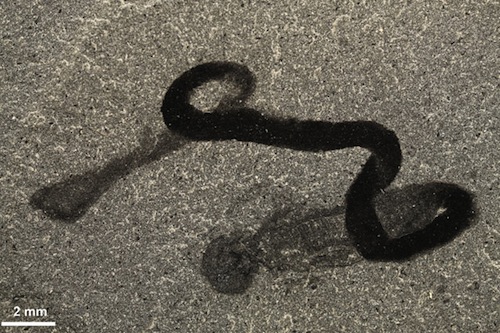 Evolution
Evolution
A New Worm from the Cambrian Highlights Darwin’s Dilemma

You’ll be hearing a lot more from us in months to come about the dilemma posed for Darwinian evolution theory by the Cambrian explosion. Every phylum (animal body plan) that appears without evident ancestors in that geologically brief window is a riddle for adherents of conventional evolutionary thinking. Such an irradiation of biological information is not in keeping with Darwinian expectations.
Darwin himself recognized the dilemma, and it gave him reason for doubt.
That fact has been at the forefront of our attention recently. As if reading our minds, Nature has just unveiled a new animal from the Burgess Shale fossils, a marine worm now revealed as going back 505 million years, not previously known to have originated in the Cambrian period: enteropneusts (“Tubicolous enteropneusts from the Cambrian period“). Their modern form is acorn worms.
An author of the study, biologist Christopher Cameron at the University of Montreal, marvels:
Our description of Spartobranchus tenuis, a creature previously unknown to science, pushes the fossil record of the enteropneusts back 200 million years to the Cambrian period, fundamentally changing our understanding of biodiversity from this period.
More:
It’s astonishing how similar Spartobranchus tenuis fossils are to modern day acorn worms, except that they also formed fibrous tubes.
A headline at Science Daily, “Strange Phallus-Shaped Creature Pushes Fossil Record Back 200 Million Years,” gets it right. Another, though, says: “Strange Spaghetti-Shaped Creature Is Missing Link: Discovery Pushes Fossil Record Back 200 Million Years.”
But filling in “missing links” is, at least in pop science terms, something we associate with evolutionary problems that have been solved. That’s the opposite of the case here. The researchers argue that identifying S. tenuis helps clarify the evolutionary relationship between two classes of the phylum hemichordata, enteropneusts and pterobranchs.
But much more interesting is that the enteropneust branch is now extended all the way back to the Cambrian, in a form easily traceable from ancient ancestor to present incarnation: remarkably similar creatures, to Dr. Cameron’s admitted “astonishment.”
So it evidently arose then, amid the eruption of most animal phyla that have left their mark in the fossil record. If the Cambrian event is an entire orchestra suddenly bursting into sound where previously there had been only a basically empty stage, then the new worm might be back there in the woodwinds section. Considering its diminutive size (10 centimeters at most), perhaps a piccolo.
For Darwinists, the problem of the Cambrian explosion, already considerable, is now a little more problematic.
Image credit: University of Toronto/Jean-Bernard Caron.
